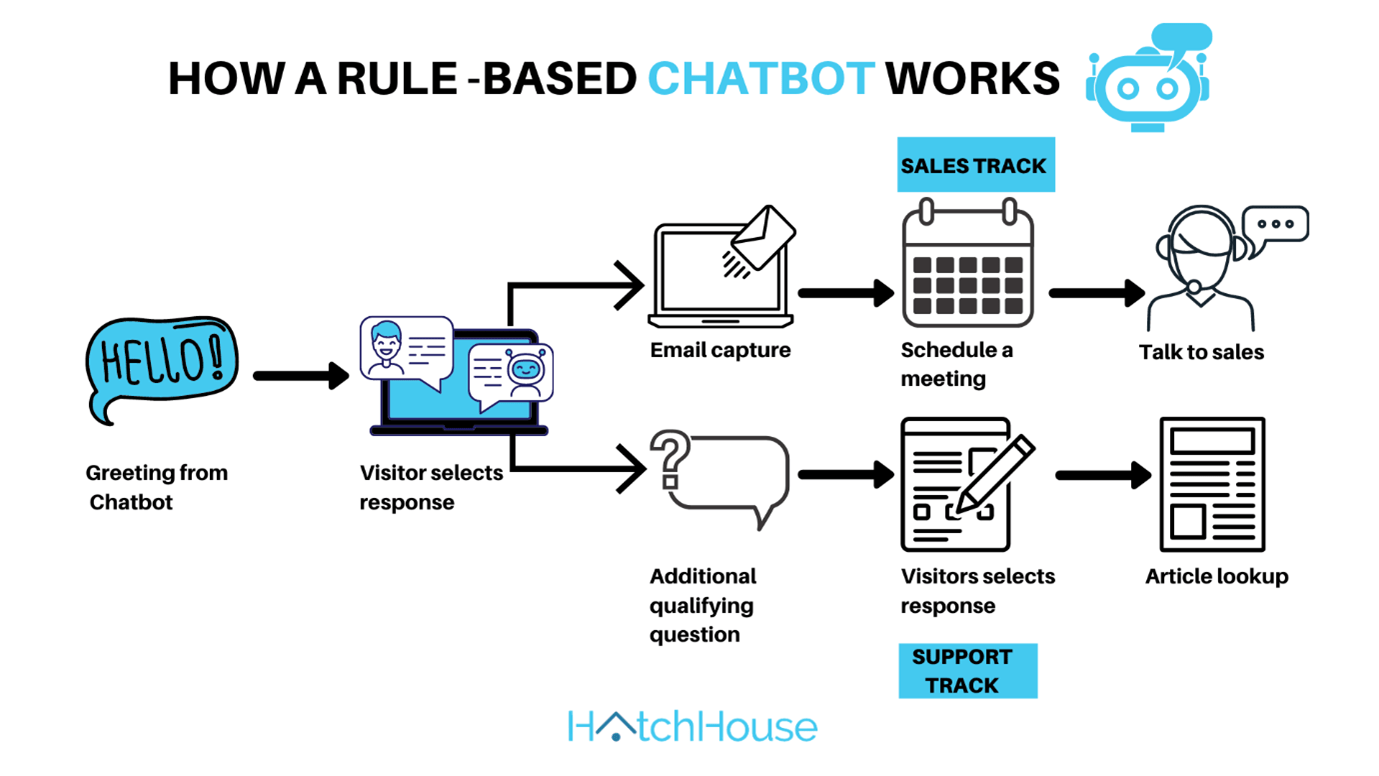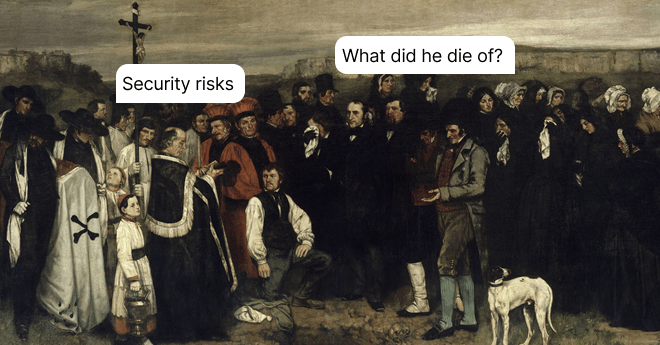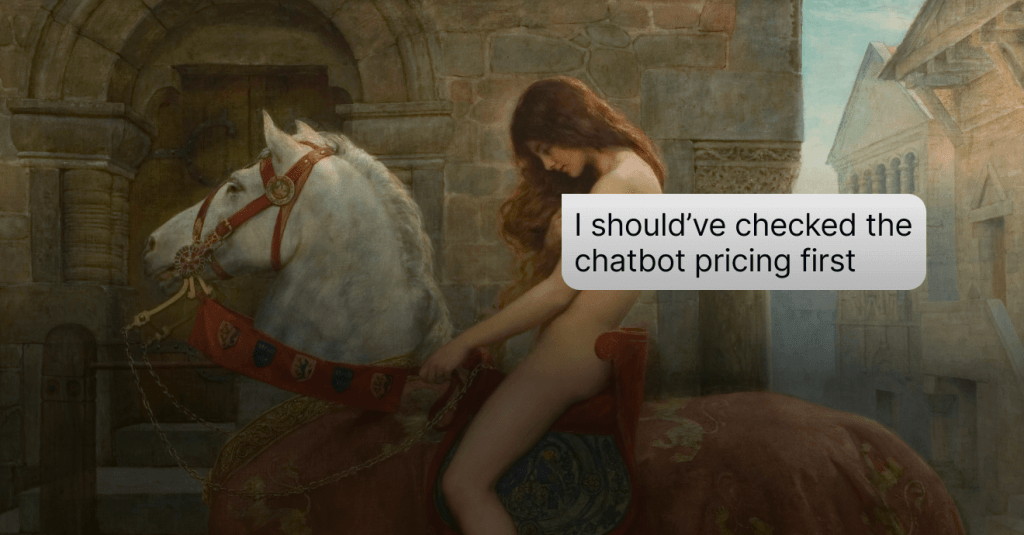10 Types of Chatbots: Key Specifics, Mechanics, and Areas of Usage
Dive into our article to learn more about the main types of chatbots out there.
Written by Tetiana Shataieva
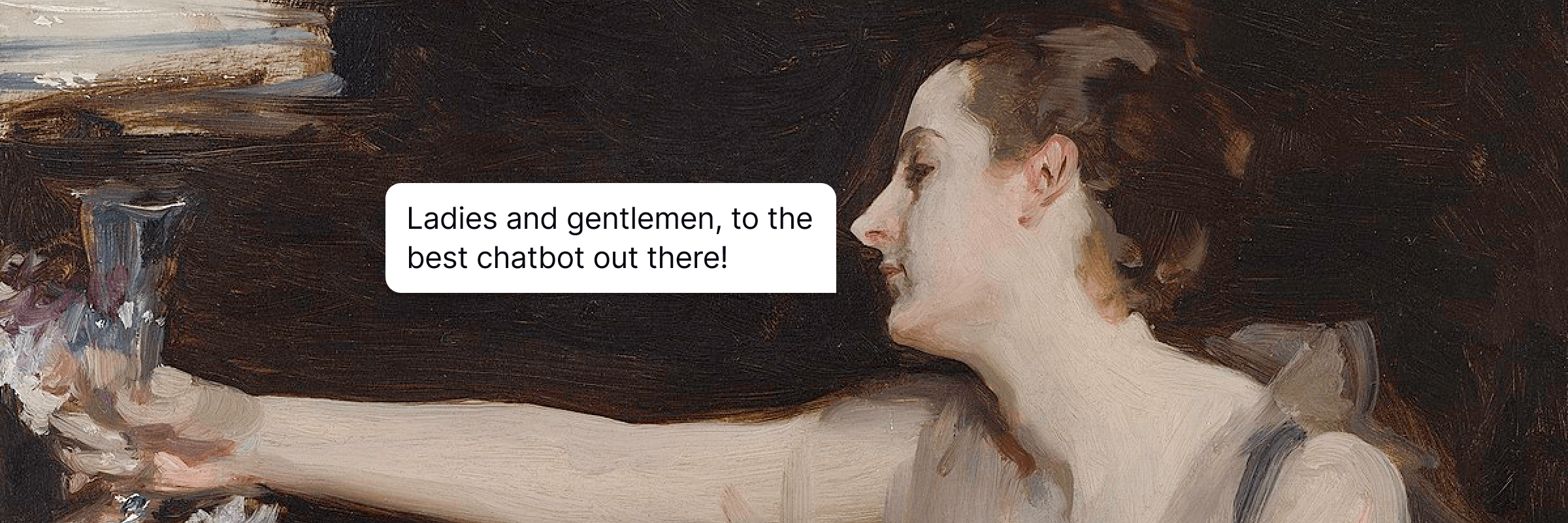
Most of us at this point in our lives have probably used chatbots. But have you ever wondered how they work? What types of chatbots are there? How do we interact with them? Before we dive in and answer these questions, let’s quickly cover the basics.
What is a chatbot? A chatbot is a computer program created to serve users alongside a knowledge base center and live support agents. It simulates human conversation and lets people feel like they are communicating with another person while, in fact, interacting with digital devices.
There are simple chatbots that answer elementary queries with pre-written responses. And, there are more sophisticated bots that serve as full-fledged digital assistants, capable of learning and evolving as they gather more data.
What are the benefits of chatbots? The main benefit of chatbots is quick 24/7 support available for users. Another benefit is that chatbots allow businesses to cut up to 30% of customer support costs. To sum up, this tool can help you save time and money while generating more leads every day (as much as 55% more!).
The rise of technology and artificial intelligence is introducing many new developments, hence, different types of chatbots. In this article, we will explore the main types with examples. It will give you a clear understanding of chatbot classification and what would be the ideal chatbot for your business!
Different types of chatbots: TL;DR table
A “big market pie” stimulates hundreds of companies worldwide to develop various types of chatbots that can improve customers’ experience across different fields. For this reason alone, some sources say there are 3 types of chatbots, others round up the number to 7.
So, how many types of chatbots are there? It depends on the functionalities, your purposes in business, and the use cases of bots. Not to miss anything, let’s go through each of the two categories, starting with different types of chatbots based on how they work.
For those who absorb the info in a more structured way, we assembled this convenient example-based table. Skim it through and prepare to dive into the world of chatbots:
TYPES OF CHATBOTS BASED ON HOW THEY WORK
| Type | Pros | Cons | Chatbot example |
|---|---|---|---|
| Button-based | Ease of use | Reduced working capabilities | MobileMonkey |
| Keyword recognition-based | Precision in customers’ queries, Quick response | Not always able to adapt to abrupt scenarios | CapitalOne’s Eno |
| Rule-based | A smooth learning curve, Codeless editor, Numerous use cases | Should be triggered by a customer first | HelpCrunch |
| AI chatbot | More personalized customer experience, No human rep involvement | Must be constantly updated and trained | Emotibot |
| Hybrid model | Simplicity of the rule-based bots, AI features | Complexity in set-up | Virtual Spirits |
| Voice bot | Ability to cover customers’ voice requests, The quickest communication | Can sometimes get off the topic | Sophia the Robot |
TYPES OF CHATBOTS BASED ON HOW THEY ARE USED
| Support bot | Cross-functional purpose, Proactive reach, Handle FAQs, Customer data collection |
Limited abilities to handle complex questions | H&M company |
| Marketing and sales bot | Customer engagement boost, Upselling and cross-selling opportunities, Basic lead pre-qualification | Redundant promos may overwhelm customers | LEGO |
| Skills bot | Multitasking, Executes basic commands | Doesn’t understand complex questions | Domino’s |
| Entertainment bot | Improved customer engagement | Not aimed at customer support | Netflix |
Types of chatbots based on how they work
Based on the operational process, I divided chatbots into 6 different categories. You can find examples of each type to get a better understanding. I bet you have come across almost all of those types before.
Button-based
A button-based chatbot is the most basic type on the market today. A user just has to select the topic from the predefined buttons to perform the desired action. Hence, there is no possibility for a customer to give free text input.
It’s quite possible, therefore, that the user’s query won’t be listed, and the bot will be just useless in some cases. To put it another way, this is a “scripted chatbot”, constrained to certain question-answers.
Can you then say it’s a bad type of chatbot since it’s so basic? Definitely not. It’s an effective tool for answering repetitive questions.
For example, the Mobile Monkey bot provides buttons for users to choose a marketing topic of their interest. Next, the bot offers you to download a marketing guide. But before you can do this, it asks for some contact information. Bingo! You get a new lead to your potential customer base. Without any human contact.
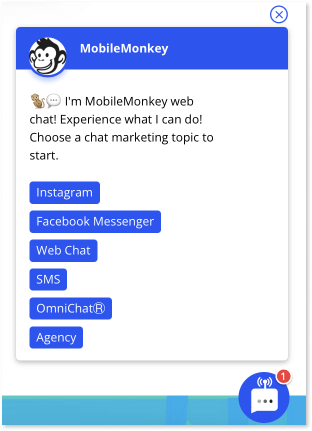
Keyword recognition-based chatbots
A keyword recognition-based chatbot is a more advanced tool than a button-based chatbot. This bot has the ability to spot relevant keywords in the users’ queries and provide appropriate answers.
For instance, when a lead asks, “What is the price for product X?”, the chatbot can recognize the keywords “price” and “product X”, and give detailed information about the pricing model.
Can this type of chatbot aid your business? Yes. Keyword recognition-based chatbots can be useful for websites as they allow users to type in their questions and get a quick response within seconds to the most popular queries. It feels like a natural dialogue that has a positive effect on customer satisfaction.
Here is an example from Capital One’s “Eno” banking bot. This chatbot technology recognizes the keywords provided by a user, such as: “left”, “on card”, “awesome”, and “due date”.
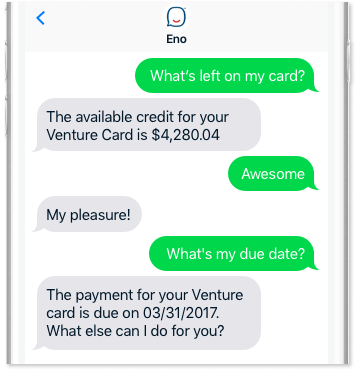
Rule-based chatbots
Rule-based virtual assistants are capable of answering queries based on a predefined set of rules that are embedded into them. The complexity of the rule can greatly vary from a simple set to an advanced one. Usually, it depends on the industry field, the tasks the company wants to solve with the help of the bot, and the resources (money, human).
These bots are built on a conditional if/then basis, which makes them really simple to train. Speaking of, the chatbot for websites by HelpCrunch is driven by the same logic. Thus, you don’t have to dedicate a fortune to implement such a bot – just write a script.
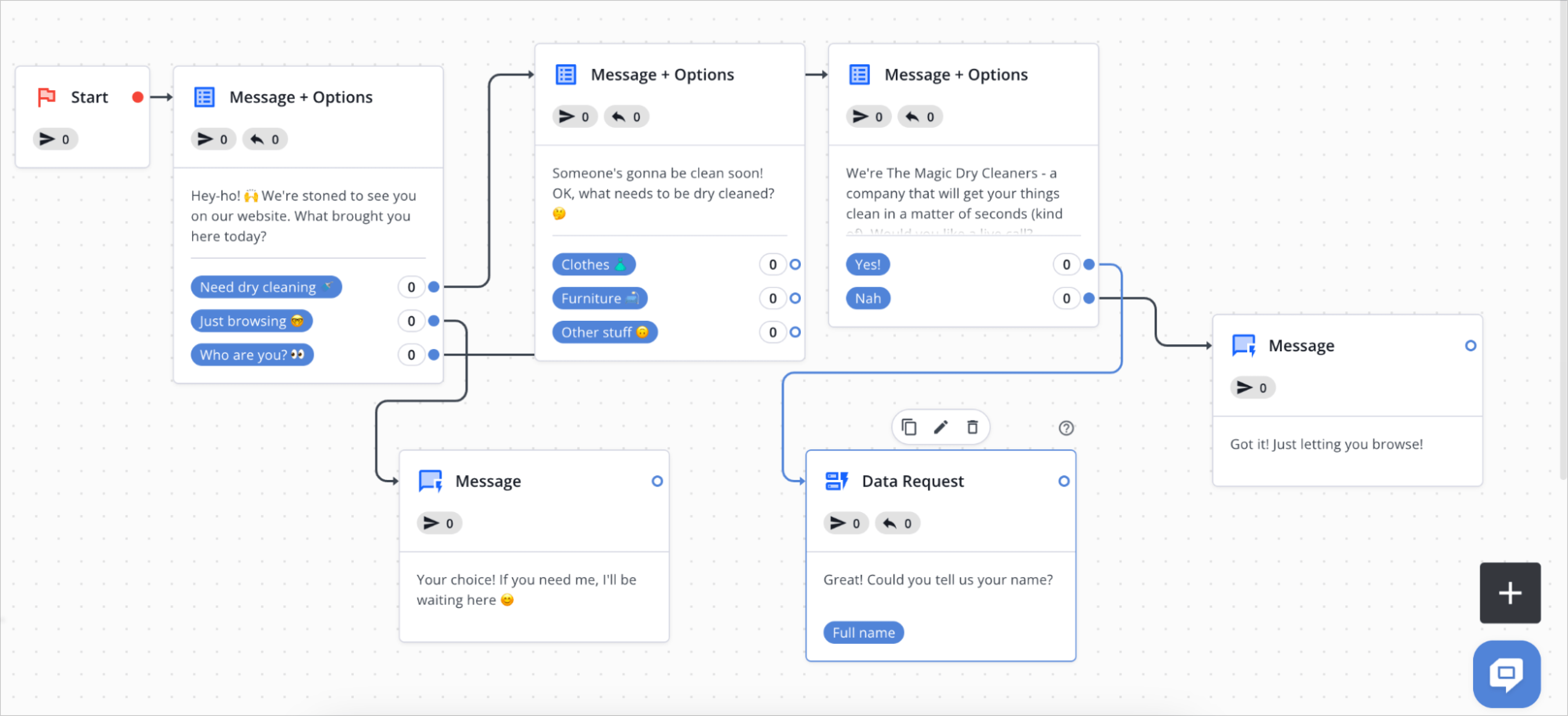
It’s worth noting that rule-based bots cannot learn from practice on their own. They will only provide the information that businesses want them to provide.
Is it a worthwhile investment? Definitely. Especially if you want to build an advanced bot without spending much time and money. In case the bot can’t answer a certain query, it can efficiently hand over the conversation to a live support agent. It’s a fast and convenient way to serve clients online.
For example, look at this quick scheme. This is a very simple rule-based chatbot that works by recognizing specific words in users’ inputs. Then the bot identifies the intent behind the keyword and provides a response.
Before we jump to the next type, I hardly recommend you give the HelpCrunch chatbot a try. Sign up for a free 2-week trial to decrypt its robust functionalities.
AI chatbots
AI bots are capable of self-learning. They are programmed with Natural Language Processing (NLP) and Machine Learning. Unlike rule-based bots, it takes much more time to build and train an AI bot.
These types of AI chatbots work well with companies that have a lot of user data that allows chatbots to self-learn from it. Artificial intelligence bots can potentially understand and respond in different languages to provide more personalized communication.
Contextual bots do not just speak with customers, they can also analyze the users’ behavior and mood. The China-based startup Emotibot is working to develop bots capable of detecting the current emotions of the customer and responding accordingly.
Some AI bots are specifically designed for ecommerce businesses and are known as AI shopping assistants. These tools support visitors or customers throughout their purchasing journey by offering AI-driven search capabilities, helpful nudges, interactive quizzes, and support.
Should your business consider implementing an AI chatbot? Sure, it should. Thanks to constant learning, AI and NLP chatbots can help you provide more personalized customer service and enhance user engagement. Moreover, these types of bots can handle customer queries from beginning to end without human touch and stay available around the clock with no breaks.
For example, look at the picture below and see the difference between a rule-based chatbot and an AI bot in practice. The latter is a bit more advanced and, in some cases, can better recognize user queries even if they don’t match specific keywords.
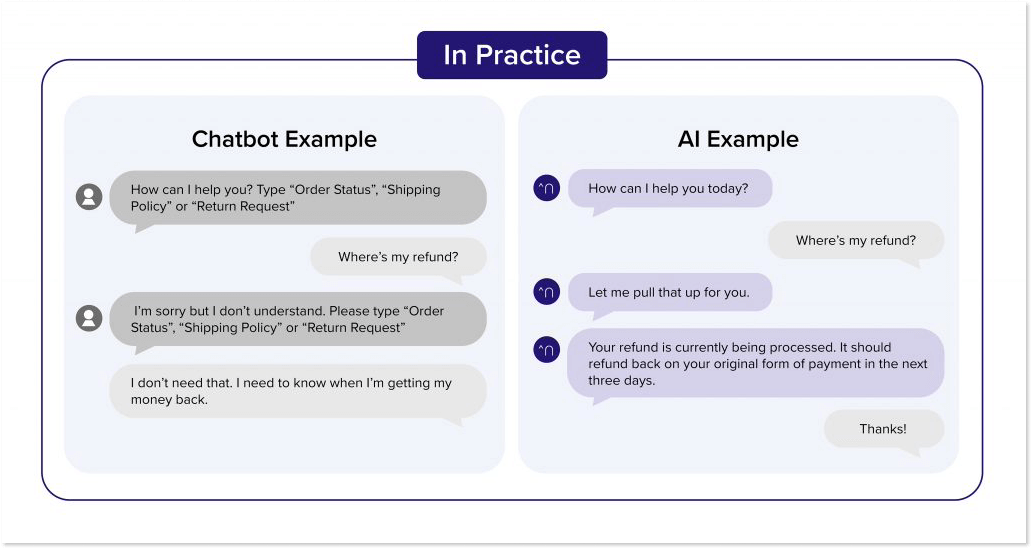
Hybrid model
The hybrid model offers the best of three worlds: the simplicity of the rule-based chatbots, the advanced capabilities of the AI bots, and the empathy of human interaction. As a result, you receive a universal approach where repetitive questions can be answered by a simple chatbot, more complex ones can use the help of AI technology, and those that require human touch will get it from a live agent.
While it might sound complicated, it won’t change basically anything in the agents’ job, or customer replies process. The hybrid bot that embraces the rule-based and AI features will act as a new virtual agent. It will take care of the queries it can handle on its own and pass multilayered difficult questions to live support representatives.
Do you need a hybrid chatbot model? You might if your company is a huge enterprise with numerous queries and a rich customer database. Due to the complexity involved in setting up a hybrid chatbot, this tool will best cater to the needs of large businesses. But for aspiring companies that receive a small number of simple questions, there is no need to spend so much time and money on hybrid chatbots.
For example, below, you can see that a bot offers to select one of the options or write a question. And when a visitor provides their own query that is not on the list, a chatbot can perfectly keep up with the dialogue and help the user.
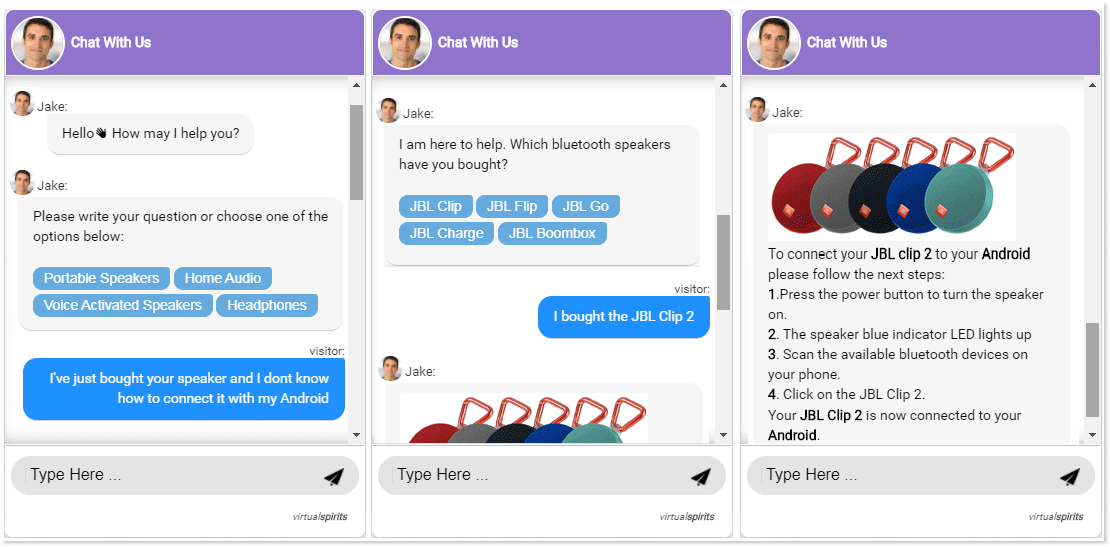
Voice bots
A voice bot is a software program that allows a user to interact with a device by speaking to it. The tool can understand a spoken question, analyze it, and structure a fitting audio response. It’s not exactly the same as a chatbot but has many similarities.
Voice and chat virtual assistants use similar underlying technology. They both can be basic, like those when you call a hospital and have to press 0-9 to choose a proper option, or advanced, like Siri, powered by artificial intelligence. At the core, chat, and voice bots have the same task, which is to understand a customer’s question and deliver the right answer.
Should your business take a closer look at voice bots? Of course, especially if you provide voice support to your customers and have a quickly growing number of requests. The main benefit of voice bots is that they are fast, as voice is the quickest form of communication. So a user can get an immediate answer without typing or navigating drop-down menus.
Speaking of examples, you definitely know many, from Apple’s Siri to Amazon’s Alexa. In this part of the article, I’d like to share another one, less obvious, Sophia the Robot. I had an opportunity to attend her performance in Cracow a few years ago. She communicates by using AI-powered voice bot software. I hope this video can put a smile on your face 🙂
Types of chatbots based on where they are used
Based on the usage case, chatbots can be divided into 4 main types. Basically, they all aim to help businesses grow and provide better service to leads and customers. Let’s dive in!
Support chatbot
This type of chatbot is used in customer service to complete tasks related to supporting users. Usually, they handle all types of FAQs and walk a visitor through the whole process to the demo or buying stage. If a chatbot can’t provide a response, it passes customers to support agents.
A customer support bot can be used in any industry – banking, retail, human resources, digital marketing, health care, and more. They can help you:
- Handle repetitive questions
- Focus on more important user queries
- Collect contact information
- Provide proactive support
- Collect customer feedback
- Save business resources
For example, a Swedish company H&M adopted a chatbot on their website to assist users in choosing the best product or answering FAQs.
Types of chatbots based on where they are used
Based on the usage case, chatbots can be divided into 4 main types. Basically, they all aim to help businesses grow and provide better service to leads and customers. Let’s dive in!
Support chatbot
This type of chatbot is used in customer service to complete any tasks related to supporting users. Usually, they handle all the types of FAQs and walk a visitor through the whole process to the demo or buying stage. If a chatbot can’t provide a response, it passes customers to support agents.
Support chatbots can be used in any industry – banking, retail, human resources, digital marketing, health care, and more. Over 67% of customers worldwide use a chatbot for customer support.
Chatbots for support can help you:
- Handle repetitive questions
- Focus on more important user queries
- Collect contact information
- Provide proactive support
- Collect customer feedback
- Save business resources
For example, a Swedish company H&M adopted a chatbot on their website to assist users in choosing the best product or answer FAQs.
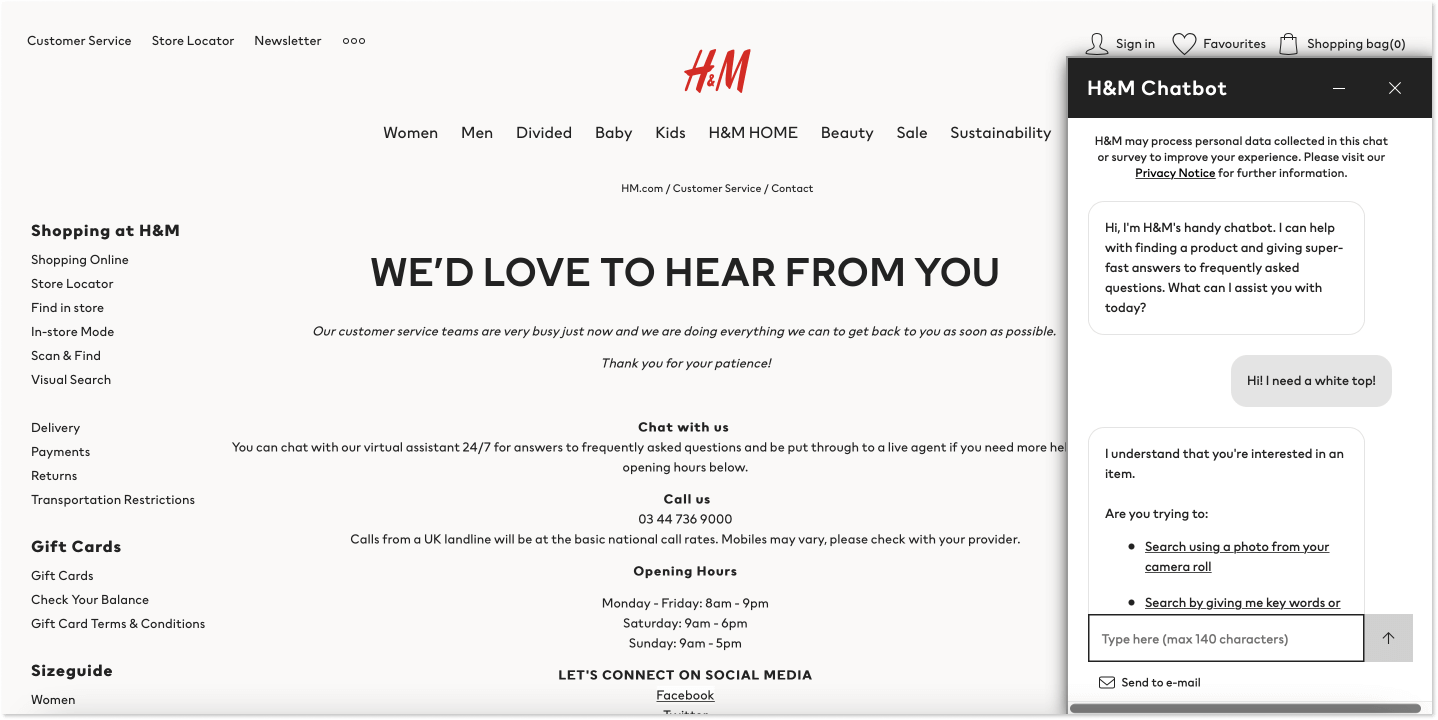
Marketing and sales chatbots
Another popular use case of chatbots are sales and marketing. The main purpose of a bot here is to help customers explore and buy your product or service. By sending relevant or engaging information to users, bots pre-qualify leads and move them through a sales funnel.
The software pays off better than you think. Reports show that chatbots increase sales by an average of 67%. How? Just like your business can use a chatbot for support, it can also use it for sales – start a conversation with a website visitor, qualify leads, or upsell customers.
A sales or marketing chatbot can help you:
- Gather information and pre-qualify leads
- Move leads through a sales funnel automatically
- Send promotional notifications
- Upsell and cross-sell products
- Personalize customer experience
- Boost engagement
For example, the Danish toy production company LEGO relies a lot on their bot ‘Ralph’, who assists customers and makes sure they complete their orders.
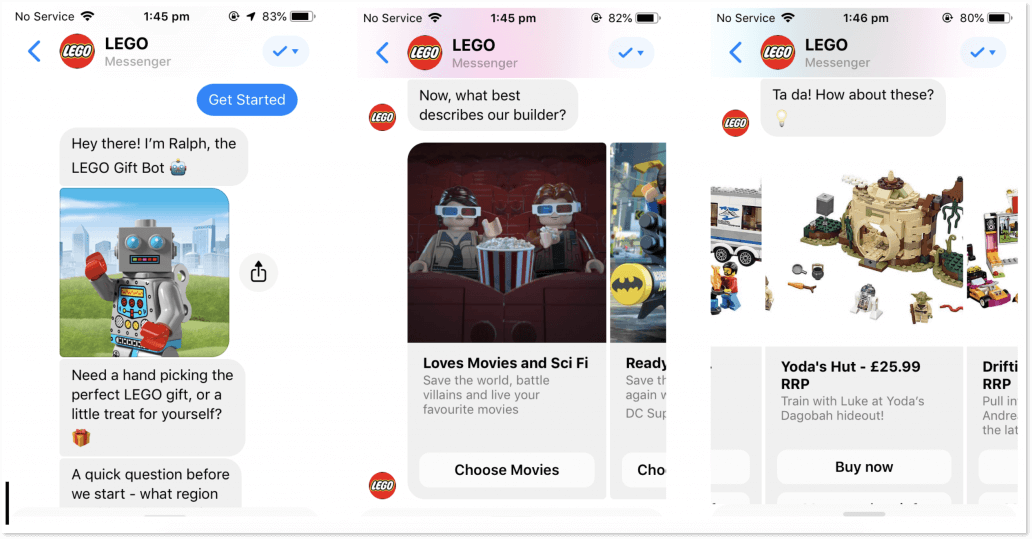
Skills chatbots
Those are chatbots that can execute commands such as “play the song”, “make a call”, “open the application”, “send an email”, etc. For this type of chatbot, voice functionality implies that the user doesn’t need to hold the device or press any buttons. This solution can be used in any industry – healthcare, hospitality, banking, or entertainment.
At the same time, commands can be given in the text form. The software is capable of simply obeying instructions that allow users to multitask. In most cases, for a basic skill chatbot, there is no need to invest too much time and implement AI technology. It would be enough to just learn how exactly to give commands to the bot so that the device knows what to do.
Skills chatbots can help you:
- Execute commands
- Allow users to multitask
- Increase visitor engagement on your website or platform
- Improve customer satisfaction
Domino’s chatbot is able to re-order members’ previous orders. All a user needs to do is send an emoji via SMS. Customers can also make an order via a Google Assistant, Alexa bot, or Facebook chatbot.
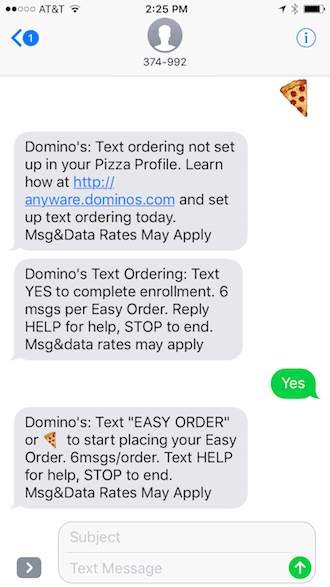
Entertainment chatbots
The last type of chatbot I’d like to mention here is the entertaining chatbot. Usually, they are used for one and only purpose, which is to improve engagement with your brand and provide a unique and fun experience for users.
Even though used mostly for fun, entertainment bots tend to be complex to build. You won’t be able to do it without artificial intelligence that interprets what users are saying. The software needs to be able to field a wide range of individual inputs, as there is no specific area of use here.
As a rule, all the fun lies in the fact that a person asks tricky questions, and the more original and funnier the bot can answer, the better.
Entertainment chatbots can help you:
- Entertain customers
- Engage customers better
- Build relationships with users outside a business context
- Generate buzz around it
A weather bot, a gaming bot, and even Slack bots are different types of chatbots in the entertainment industry. For example, Netflix uses bots to write stand-up concerts for digital characters! Watch the video below and tell me, how do you like it?
How to choose the best bot among all these types of chatbots?
There are many types of chatbots, and the best one for you will simply cover your current business needs. If you have an aspiring startup with a few dozen or hundreds of active users, choose a rule-based bot. It will perfectly meet your expectations without demanding too much money or effort from you.
On the other hand, if you have a huge company counting thousands and thousands of users, consider adopting some advanced solutions like AI or hybrid model chatbots.
I really liked the phrase, which perfectly describes this situation: “Don’t bring a bazooka to a water pistol fight”. Just choose a solution that suits your current needs.
Wrap up
There are many types of chatbots, starting from the most basic ones to hybrid models that embrace rule-based bots, AI, and human communication. The scope of chatbots can also be completely different, but as a rule, they are used to support customers and automate sales processes.

